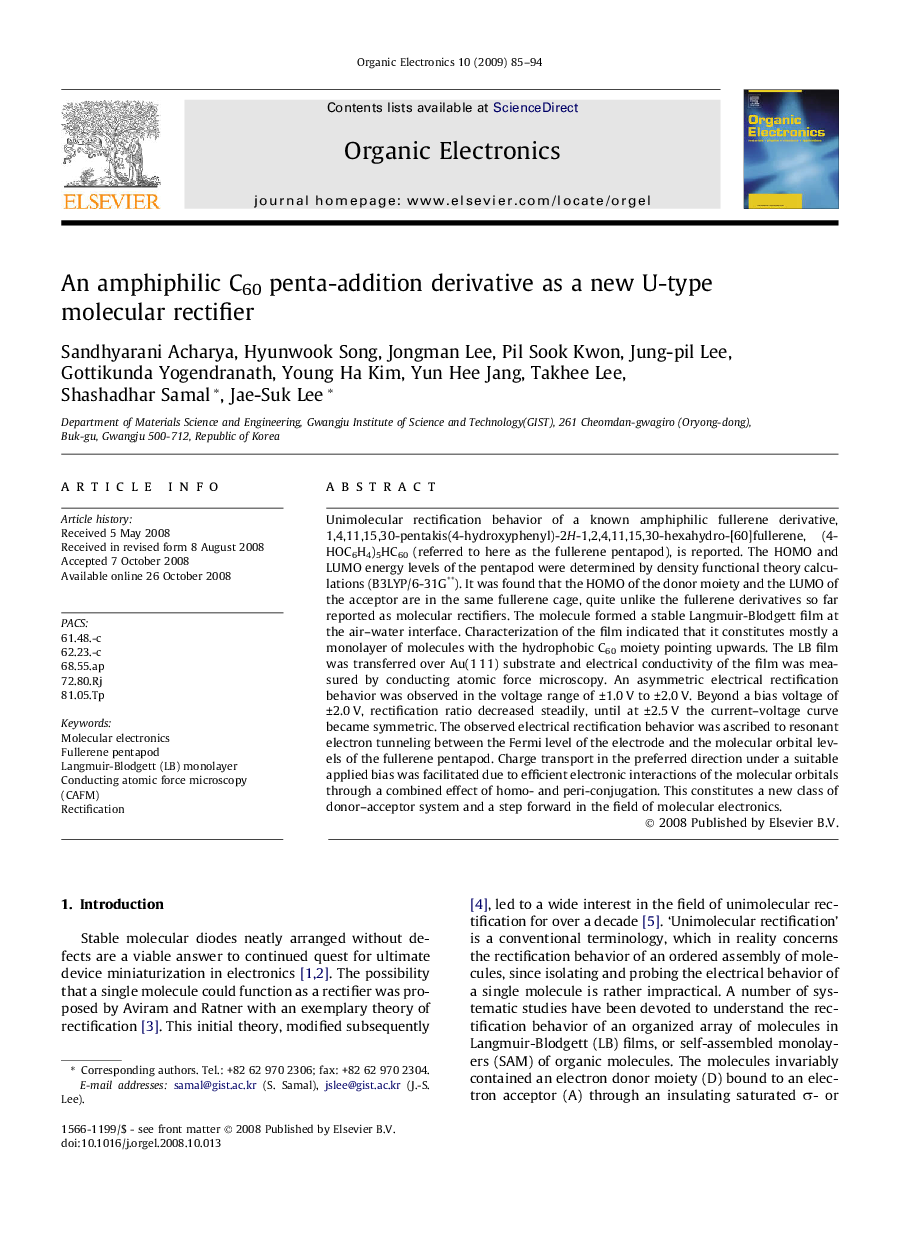| Article ID | Journal | Published Year | Pages | File Type |
|---|---|---|---|---|
| 1268272 | Organic Electronics | 2009 | 10 Pages |
Unimolecular rectification behavior of a known amphiphilic fullerene derivative, 1,4,11,15,30-pentakis(4-hydroxyphenyl)-2H-1,2,4,11,15,30-hexahydro-[60]fullerene, (4-HOC6H4)5HC60 (referred to here as the fullerene pentapod), is reported. The HOMO and LUMO energy levels of the pentapod were determined by density functional theory calculations (B3LYP/6-31G∗∗). It was found that the HOMO of the donor moiety and the LUMO of the acceptor are in the same fullerene cage, quite unlike the fullerene derivatives so far reported as molecular rectifiers. The molecule formed a stable Langmuir-Blodgett film at the air–water interface. Characterization of the film indicated that it constitutes mostly a monolayer of molecules with the hydrophobic C60 moiety pointing upwards. The LB film was transferred over Au(1 1 1) substrate and electrical conductivity of the film was measured by conducting atomic force microscopy. An asymmetric electrical rectification behavior was observed in the voltage range of ±1.0 V to ±2.0 V. Beyond a bias voltage of ±2.0 V, rectification ratio decreased steadily, until at ±2.5 V the current–voltage curve became symmetric. The observed electrical rectification behavior was ascribed to resonant electron tunneling between the Fermi level of the electrode and the molecular orbital levels of the fullerene pentapod. Charge transport in the preferred direction under a suitable applied bias was facilitated due to efficient electronic interactions of the molecular orbitals through a combined effect of homo- and peri-conjugation. This constitutes a new class of donor–acceptor system and a step forward in the field of molecular electronics.
